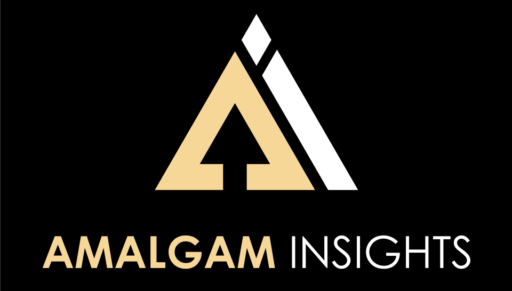
Industry: Accounting and Audit Automation
Key Stakeholders: CIO, CFO, IT Controllers, Finance Managers, Accounting Managers
On January 23rd, 2018, FloQast announced new visualization capabilities for its Close Analytics solution initially launched in April of 2017. These visualizations included views of retrospective and close trends, progress in entity management, and a filtered isolation of high risk processes and root cause drivers.
Amalgam Context for FloQast Visualizations
FloQast is a close management solution created to improve the financial close process. Through a combination of workflows, cloud storage, and deep accounting subject matter expertise, FloQast provides a cloud-based environment to coordinate and accelerate the financial close.
In April of 2017, FloQast launched its Close Analytics solution, an additional module that allowed accounting teams to add visual tracking and metrics to improve close management. These analytics have been enhanced by this most recent announcement to improve process visibility for controllers, finance and accounting executives, and other key executives tracking the accounting close process. Amalgam Insights believes this announcement and its focus on risk contextualization and process specificity reflects the culmination of multiple strategic needs and trends in the accounting world.
First, these visualizations reflect a key market trend that accounting and financial automation in and of themselves can become a Black Box of risk when the process is not completely transparent. Although FloQast was already a market leader in providing visibility in the close process, FloQast’s efforts in providing clear visualizations on an entity and process-specific basis continued FloQast’s leadership in making financial close faster, easier, and more transparent.
Second, these visualizations offer accounting and executive teams with a greater shared basis for trust in their financial close. Amalgam Insights believes that Trust is the key theme for enterprise technology in 2018, superseding speed, automation, and productivity. Fortunately for FloQast and FloQast clients, close process visualization can simultaneously accelerate both productivity and trust. However, modern solutions must focus on trusted productivity, as productivity in and of itself is not sufficient.
Third, agility requires real-time visibility, or at least a reasonable facsimile of the current state of affairs. To minimize bottlenecks in the close process, accounting leads must be aware of potential problems and delays that are currently in place. Through these added visualizations, FloQast provides a level of visualization that is not currently available in the vast majority of mid-sized and large enterprises due to the inherent disaggregation that currently is pervasive in accounting departments.
Fourth, visualizations must reflect the past, present, and future of any given process to be truly useful. Historical visualizations of the past are important for identifying patterns and viewing evolutionary changes in process and activity. Current visualizations are important in taking action in the moment and allocating resources appropriately. And expected visualizations of future processes and results are vital in forecasting the need for additional resources and time that may be necessary due to external demands such as new revenue recognition and leasing requirements, mergers and acquisitions activity, or significant portfolio reallocations.
Recommendations for the Accounting Community
The visualization of financial close processes and progress is still relatively novel because of the traditional distribution of work in managing the enterprise close. Because of this, there are very few best practices for accounting teams to follow in tracking the close other than to simply visualize all processes. As accounting departments seek to integrate visualization into their close tracking process, Amalgam provides the following recommendations.
Use cloud-based storage for managing financial close documents, including relevant reconciliation and consolidation reports that must be viewed by two or more people. Without this shared view of key documents and standardization of processes and document names, businesses will be unable to support the data access and real-time updates necessary to visualize financial close process in the first place. The ongoing creation and governance of these documents can also be improved by creating repeatable monthly, quarterly, and annual templates that are also made available to all relevant financial close stakeholders.
Ensure that close visualizations include views of the past, present, and future, but be aware that each of these sets of visualization are used for different use cases. Visualizations focused on the past are important for compliance, pattern recognition, and a historical record of evolutionary change in financial close and data collection. Visualizations portraying data in the present need to be linked with alerts, high-risk processes, and the need to take action when necessary. Visualizations showing future forecasts and potential outcomes allow departments to prepare for key events, regulatory changes, or business transactions that may require reallocation, additional preparation, or additional investment to ensure consistent delivery of accounting services.
Be careful that the financial close is not a black box of activity. It is not sufficient to simply create a set of financial documents that reflect the business activity of the past fiscal period. Without sufficient explanatory documentation, progress tracking, and identification of key drivers that affect financial close efficacy, the financial close is not repeatable and companies will be stuck reinventing the wheel every month simply to conduct a basic business task. This lack of repeatability from Black Box thinking will prevent accountants from taking on higher business value tasks, such as resource optimization, sales operations, and other analysis that can elevate accountants from operational bean counters to strategic business consultants.
By aligning accounting process visibility to these key industry trends, Amalgam believes that FloQast’s focus on visibility has enhanced the Close Analytics module that this vendor offers and met a key need for improving accounting environments. FloQast’s improved visualizations reflect holistic business needs for increased trust, real-time agility, and risk contextualization in accounting departments. Mid-sized and large enterprises must adopt visualizations that portray retrospective trends, entity-specific close processes, and risk-prioritized isolation to truly gain control of their close environments.




